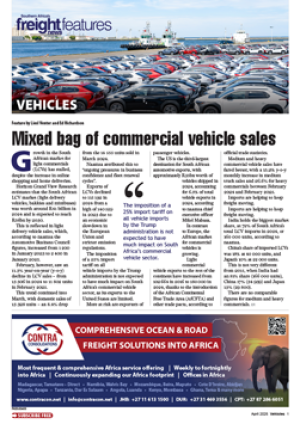Subsistence allowance increased
SOME Y2K changes have been made to the Export Marketing and Investment Assistance (EMIA) scheme - but may make an already-cumbersome application procedure even less accessible, according to Riaan de Lange, senior manager of the Deloitte & Touche customs and international trade consultancy.
These changes were dated January 10, 2000, and are the first since the introduction of the scheme in 1996/97.
While none of the changes are major, according to De Lange, the addition of more qualifying criteria will make this scheme even less desirable.
Bearing in mind the added burden of the additional requirements that have been imposed on applicants, he said, the question should be posed as to what extent business and labour have been consulted on the revision process?
Prior to the changes, companies had already voiced concern about the application procedure's stringency and cumbersome nature.
They would rather be out of pocket than attempt to comply with the provisions of the scheme, said De Lange. The EMIA scheme would really fulfil its functions if it encouraged the use of the incentives on offer. This rather than making them available in print - but virtually inaccessible to potential beneficiaries.
There is no easy, or guaranteed way into the scheme. Said De Lange: It is important to note that the assistance is provided at the absolute discretion of the director-general of Trade & Industry.
The EMIA Scheme is a composition of eight sections: Primary Export Market Research; Foreign Direct Investment Research; Exhibition Assistance; Outward-Selling Trade Missions; Outward Investment Recruitment Missions; Inward-Buying Trade Missions; and Assistance to Industry Specific Sectors.
The changes have seen the addition of three new qualifying criteria: The export/marketing competence of the person visiting the foreign country; the extent of the export marketing planning; and membership of an Export Council.
There has been a thread running through all the schemes, according to De Lange - an increase in the subsistence allowance from R800 to R1 000. In addition, the Criteria for Approval have been made more stringent - now demanding that applicants must provide, amongst other information, a detailed, confirmed itinerary of persons to be visited.
De Lange supplied the following overview of the changes in each part of the scheme:
¥ Primary Export Market Research: For product registration a maximum amount of R100 000 per annum, is provided - whilst the marketing consultant grant and the R200-a-day taxi/car rental grant have fallen away.
¥ Foreign Direct Investment Research: The amount allotted to marketing materials has been increased to
R10 000 per annum. Benefits in respect of the marketing consultant grant and the transportation of samples have been removed.
¥ Exhibition Assistance Scheme: The government requires the company representative at the exhibition to have contract concluding powers; and the products exhibited must be of SA-origin. Whilst the report of the exhibition only needs to be presented within six months, it is now also required that the exhibitor should have export brochures and an export price list. It is important to note, said De Lange, that a distinction has been made between participation at national pavilions; individual participation; and ad-hoc group participation.
¥ Outward-Selling Trade/ Outward Investment Recruitment Missions: The benefits for rental of a minibus and car rental have been completely removed. The government now wants applicants to provide the export potential of the industry and products, including company profiles. Also - a consolidated claim must be lodged by the mission organiser within three months of the completion of the mission.
¥ Inward Buying Trade/ Inward Investment Missions: Now required that the buying mission be organised by a qualifying organisation, export council or the Trade Department; whilst the investment mission should have the support of Investment South Africa. The subsistence allowance has been increased to R600 per day per person for a maximum of 10 days. In addition, benefits are now provided for the rental of a mini bus - up to a maximum of
R5 000. Finally a consolidated certified claim of permissible expenses for mission members must be submitted within
3 months of the completion of the mission.
¥ Assistance to Industry Specific Sectors: The government has made a distinction in respect of the cost of Assets and Expenses - as well as indicating which of the cost items will be covered under the matching grant. Of interest, said De Lange, is a grant for
the establishment of an export council for a given industry. This has a maximum of R400 000 in the first year, and R200 000 in the second.
In addition to this, De Lange told FTW, financial assistance can also be
provided for foreign trade exhibitions (as per ad-hoc group participation); trade exhibitions in SA; outward-selling and inward buying missions; generic advertising campaigns, export brochures, video's, handbooks or CD Roms; and export marketing consultants.
Copyright Now Media (Pty) Ltd
No article may be reproduced without the written permission of the editor
To respond to this article send your email to joyo@nowmedia.co.za
